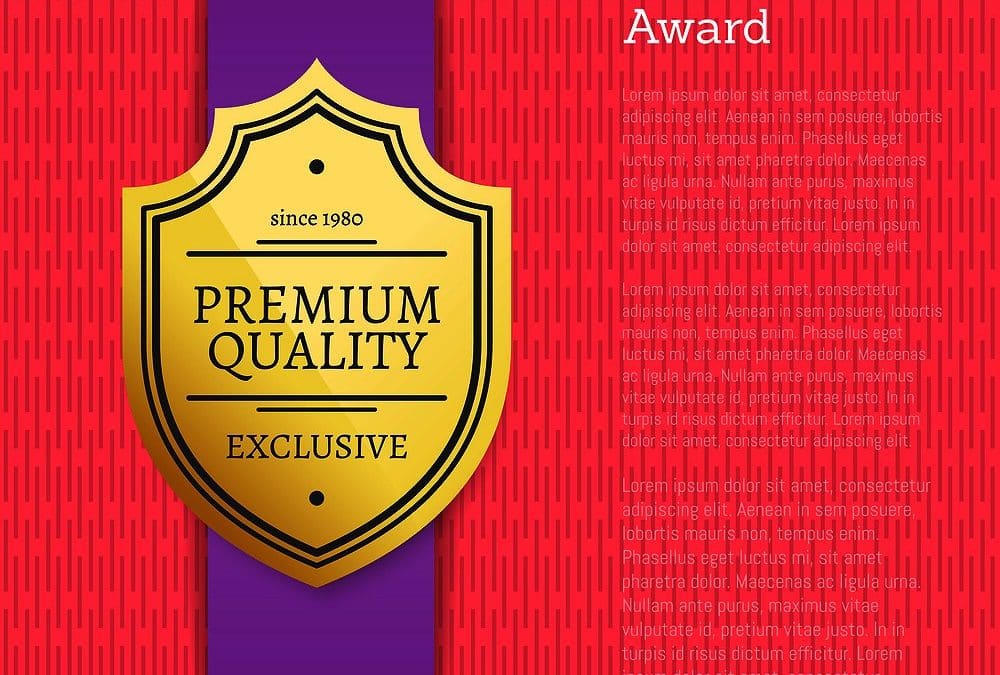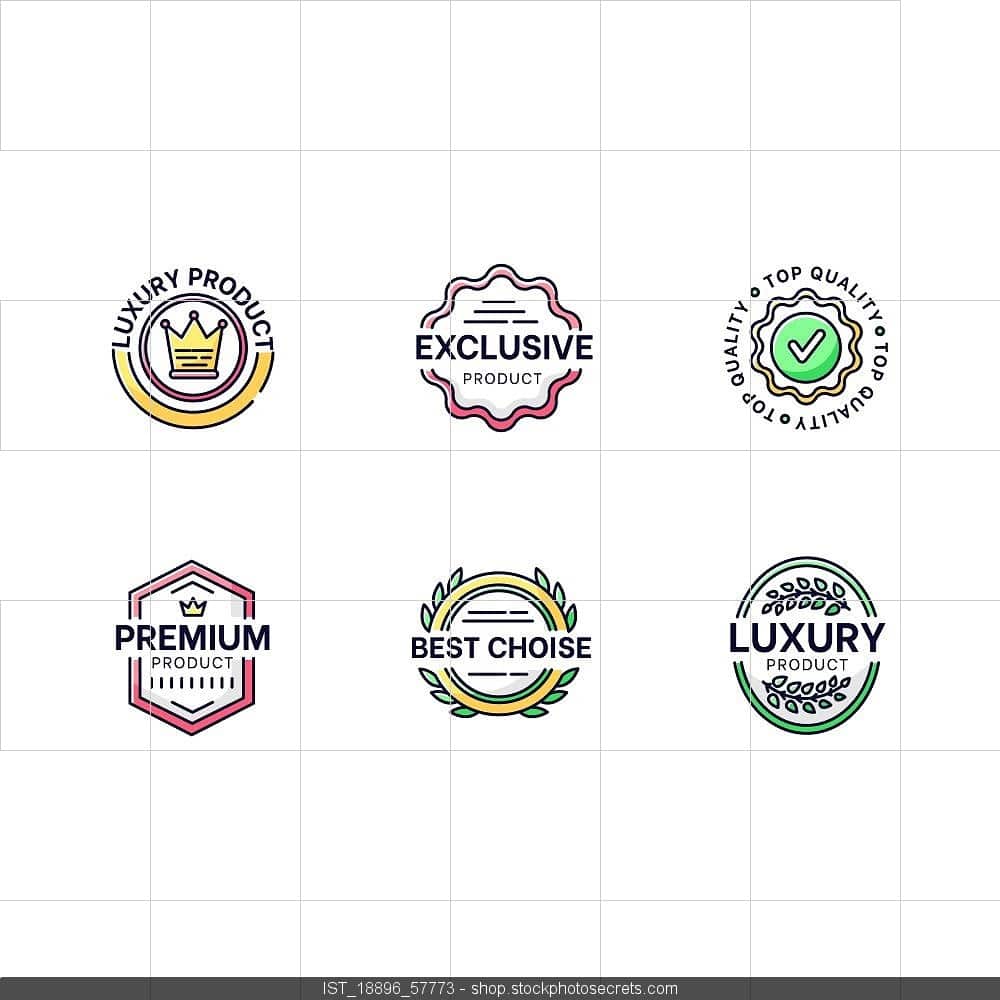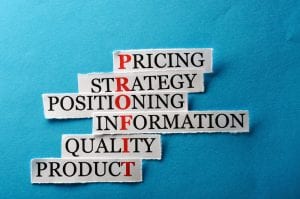
Prestige Pricing Strategy: Best Approach to Justify a Higher Price Point 💎
Will using a prestige pricing strategy help your business get the additional price premiums you want or will customers think you’re just overcharging them?
>Download Now: Free PDF How to Drive Pricing Strategy to Maximise EBIT Growth
Oftentimes, customers are willing to pay than you think. For example, customers daily justify the purchase of an expensive item, may it be a Nike sneaker or a new-release iPhone. They base the purchase on more than just quality. They consider the reputation of the product and also the brand behind it. But more than this, they desire it so much they throw all logic out the window and just pay the price.
It’s no secret that pricing and the psychology behind why people buy are very important components of a successful prestige pricing strategy – whether you’re selling a product or a service. Understanding how people buy your product is the essence of great pricing strategy – without knowing your customers, you’ll never get the price premium you deserve regardless of the quality of your products.
This is where prestige pricing comes into play.
You’ll find prestige pricing being used in high-end stores across the world. In fact, it’s easy to spot which brands follow such a pricing strategy. These are the fashion and perfume brands, jewellery, several cars manufacturers, etc.
Having said that, using prestige pricing helps in establishing a good name for your brand and company. However, you could lose it too when you sidestep from it by offering cheaper products to appeal to a broader audience. Take, for example, Tiffany & Co during the 90s. The luxury jewellery retailer offered cheaper jewellery line to target a wider audience.
Well, it became too popular. Sales and profit margins increased; however, the luxury brand soon lost its prestige and exclusivity. They’ve realised their mistake and went on to raise their prices again. The brand got back its good reputation and recovered.
In this article, we will talk about the prestige pricing strategy and provide you with some examples to better understand the method. We will share with you a case study of Apple that effectively used prestige pricing strategy. In addition, we will explain why companies should use prestige pricing strategy. Finally, we will provide you with the advantages and disadvantages of implementing prestige pricing strategy in your business.
We assert that choosing prestige pricing strategy will help your business reap the rewards it deserves. Of course, you have to find the balance… that involves looking after your business’ bottom line, at the same time considering the needs of your customers.
Table of Contents:
I. Prestige Pricing Strategy: Best Approach to Justify a Higher Price Point
II. Prestige Pricing Strategy: How Industry Giants Achieve Profit Increases of Millions per Year
III. Premium Pricing Strategy: Can You Really “Just Charge More”?

Prestige Pricing Strategy: Best Approach to Justify a Higher Price Point 💎
What is Prestige Pricing?
Prestige pricing, also known as premium pricing or image pricing, is a psychological pricing strategy that appeals to a buyer’s psyche. It is when a company set prices for its products at a higher point to provide customers with the impression that the product is high-value.
This type of strategy is closely related to brand perception. Businesses that employ this method to pricing usually have products that are not only known for their superior quality but also the value they provide to customers. The pricing approach is based on the notion that customers perceive more value in the product if it’s expensive, and that they’re willing to pay even though it’s priced higher.
Fashion, luxury cars, technology, perfume brands and other luxury products are typically priced using this method because they can be marketed exclusively.
Prestige pricing strategy varies based on a firm’s goals for their brand and offerings. A business can justify a higher price point if it has a unique value proposition that makes its product distinctive from the competition.
Examples of Prestige Pricing
Some big-time companies utilise prestige pricing strategy to value their products. To enlighten you about this pricing approach, let’s take a look at some examples of these businesses that are using prestige pricing strategy.
- Nike: Nike sets its prices for its products based on its image. High-profile athletes such as celebrity endorsers Michael Jordan and Serena Williams are wearing it. Certainly, you’d want to wear a pair too, wouldn’t you?
- Apple: What allows the company to price its products way above the cost to make them is the perceived value that Apple products give. Mostly, they are multi-purpose tools such as answering calls, sending texts, taking photos, etc.
- Rolex: Why is a Rolex watch a premium-priced product? It’s the status that comes with wearing one and the perceived quality are some of the reasons why Rolex is a high-priced luxury watch.
Apple: A case study of a successful prestige pricing strategy
Twenty-two years ago, Apple was on the brink of bankruptcy. Nowadays, Apple is worth almost a trillion dollars and its brand is worth approximately $214.48 billion dollars. This makes Apple the most valuable brand worldwide.
Apple also gets more than 60% of smartphone revenues despite the fact that it only accounts for just 24% of the smartphone market. Though Apple doesn’t sell the greater part of smartphones, it, however, takes in the majority of the profits.
We then ask, why? It’s prestige pricing. Apple smartphones are more expensive than any other smartphones. Smartphones normally cost less than $800 but an iPhone can sell for a thousand dollars or more. At the end of the day, though, Apple sells almost 90% of phones sold for $800 or more despite its higher price.
Apple continuously sets its prices for its smartphones and gadgets higher compared to its competitors. Steve Jobs focused on the four pillars of business that made Apple into a worldwide force.
- Focus on offering superior quality products
- Offer only a limited number of luxury products
- Make profits a priority over market share
- Use a “halo effect” marketing strategy so people will be desperate for new Apple products
Present CEO Tim Cook told Bloomberg Businessweek, “We never had an objective to sell a low-cost phone. Our primary objective is to sell a great phone and provide a great experience, and we figured out a way to do it at a lower cost.”
However, Cook reveals that Apple’s phones are not low-cost but they are “great” and that customers are rewarded with a “great experience.” This plays to a customer’s subconscious. Paying more means, getting great value.
Read about the Types of Financial Losses from Undisciplined Pricing.
Why Use Prestige Pricing Strategy?
Research indicates that buying luxury products has intangible advantages known as emotional value. That’s one of the reasons why customers show a willingness to pay more for the top of the line products. It doesn’t matter whether the quality and price differences don’t match. In the first place, what makes them high-end products?
Brand image is more powerful than the quality of a product. Instead of directing our attention on product quality, we must focus on the brand image. Prestige pricing is all about the perception of a brand and how customers view the reputation of a company.
If a customer thinks a brand has some intangible benefit, he/she will be glad to pay a premium price for that product. In the same manner that when you buy an Apple product, you don’t look around to check if you can find a cheaper substitute because you already know that you can. However, what you are purchasing is the value of Apple.
Interestingly, researchers also believe that high prices are an indicator of prestige. Meaning to say, simply setting higher prices improves the brand image too.
As a matter of fact, some reputable brands can set higher prices based on the power of their brand. Because they know that some customers are more than willing to pay more money for a brand just because it has the “it” factor.
For example, Nike shoes. There are a lot of shoe manufacturers that offer the same quality for less money. But Nike is perceived by many as one of the prestigious brands, thus, consumers don’t mind paying more money. Consequently, allowing Nike to charge more for its product. Higher prices reinforce the belief that Nike is a more distinguished brand.
Benefits and Drawbacks of Prestige Pricing Strategy
Here are the pros and cons of implementing a prestige pricing strategy. These advantages and disadvantages explain why big retailers are better off using such a strategy than small retailers. Though, that’s not to say that that they are not capable of using prestige pricing effectively.
Advantages
- Less Competition
One benefit of premium pricing is a competitive advantage. It helps companies fend off their rivals in the market. In addition, you set up an entry barrier so that other businesses are forced to sell their product at a cheaper price if they want to have a share of the market.
- Higher visibility
It enables businesses to stand out from the crowd, making it easier to draw customers’ attention to buy their products. Though some customers won’t be persuaded by the product, the premium price tag will grab the attention of lots of other potential customers.
- Increase in profit margins
Boost in brand reputation will lead to higher revenue. The prestige pricing strategy may result to lesser sales, however, that is made up for by the higher price.
Disadvantages
- Higher marketing cost
Marketing a new product has more costs. Customers won’t buy an expensive product especially if it is from a store or company that they haven’t heard of.
- Smaller customer base
It is a fact that when a product has a luxury status, it will not have a large customer base compared to cheaper products. It doesn’t mean, however, that expanding the customer base is not possible. It’s just that, it’s something that needs consideration when first introducing the product in the market.
- Doesn’t work with every product/service
One of the other disadvantages of prestige pricing is that it may not work with all products or services. Take cereal, for example. In the grocery store, lots of manufacturers produce cereal. You’ll come across a cheaper brand and will not pay for the most expensive one if there are dozens of other options available.
Implications
- Higher prices lead to higher profits. Though it’s tempting to set low prices, Apple, Rolex and Nike show that prestige pricing can be effective.
- People assume that the lowest prices mean the lowest quality. However, by setting higher prices, there’s a possibility that you can improve perceptions of your brand’s image and quality. It’s better if higher prices are coupled with improved performance and quality.
- A company can make it difficult for new entrants to offer similar products by investing in premium products. At the same prices without significantly increasing their marketing costs.
- Additionally, prestige pricing can help companies to save money by not producing a high volume of goods. Because the business is limiting the number of units sold, making the products become more exclusive, thus, becomes more desirable in the eyes of customers.
〉〉〉 Get Your FREE Pricing Audit 〉〉〉
Conclusion
As a business owner, you’re certainly curious about what price to set for your products. The answer is not black and white, as it largely depends on your industry and your rivals. The marketing costs associated with such a strategy is very high.
However, if you have the funds to handle the necessary marketing expenses and you believe your products deserve prestige pricing, launch them at a higher price point. Invest in advertising and building a brand, and you’ll surely see your revenue grow as a result.
One of the reasons why customers show a willingness to pay more for luxury items is that it has intangible advantages known as emotional value.

Prestige Pricing Strategy: How Industry Giants Achieve Profit Increases of Millions per Year 🏭
Have you ever wondered why some competitors defy the odds and win more profitable deals without losing customers, revenue or volume regardless of market conditions? Did you know that companies that consistently dominate their industry tend to have a dedicated pricing and revenue management function developing a prestige pricing strategy for them on an ongoing basis, including the best pricing strategy examples, options, tactics, and associated trade-offs?
Let me explain…
Over the past 20 years, many of the largest businesses in the world with revenue of over $1B+ have invested in a dedicated pricing team to safely generate profitable revenue growth for the company using the most effective go-to-market strategies, price models and analytics for their businesses and industries.
Industry giants such as GE, Caterpillar, 3M, BP, Hilti, John Deere, Parker Hannifin, Caltex, Toll DHL, UPS, Westpac, ANZ, Telstra, Optus, Hertz, Qantas, Johnson & Johnson, Winc, Wesfarmers, Woolworths, Coles, Amazon, eBay have all invested in dedicated and customised pricing functions to set and manage their pricing to de-risk earnings and drive profitable growth in their respective industries.
In 2018, we have seen a 30% increase in pricing roles advertised across industries and markets compared to 2008. This covers both ASX listed and privately-owned companies businesses with revenues from $100M+.
In this article, we will explain how companies gain profits through prestige pricing strategy. We will differentiate the three economic profit curves. In addition, we will discuss what world-class pricing teams do and how they drive profitability in tough markets. Furthermore, we will answer why companies use prestige pricing strategy.
Why Prestige Pricing Strategy?
Group 1
Billion-dollar brands like some of the companies listed above (i.e., the top 1 per cent of businesses globally) are early adopters to strategic pricing. They are keen to pursue the concept of a prestige pricing strategy. An overarching business strategy, operations, and culture are usually aligned with a prestige pricing strategy.
Billion-dollar brands started to integrate pricing teams into their businesses way back in the early ’90s. They were at the top of the economic profit curve back then. What’s more, they continue to sit at the top of the economic profit curve in their respective industries now using a range of different types of pricing strategies.
The top 1 per cent of billion-dollar+ brands have up to 50% of every dollar of new capital available and have done so for roughly 20+ years now. They don’t just implement a cost pricing strategy to stay ahead of the competition. They have a value based pricing strategy business plan, which very often integrates latest dynamic pricing analytics and systems.
A high level of pricing maturity is great for bottom line profitability. Latest pricing strategies and teams bank millions of pure profit dollars every year. Their pricing teams have a strong strategic intent and focus on driving an overarching pricing strategy that leverages the economic value of these businesses’ industry position and scalability.
Some prestige pricing strategy examples are:
- Budweiser pricing strategy
- Nike pricing strategy marketing
- Freemium pricing strategy Atlassian
- Apple pricing strategy analysis
These pricing organisations differ from most businesses because they don’t take chances with their pricing. They all have a global pricing strategy definition. Staff and customers alike understand their unique value proposition in their industry. Customers receive the right level of value in return for the price they have been charged (or perceived value).
Group 2
Then, there are 90% of companies that reside in the middle of the economic profit curve. It would be fair to say that they don’t have a prestige pricing strategy. Pricing is largely ad hoc and inconsistent. Resources across sales, marketing, and finance, are stretched then to cover pricing tasks. There may or may not be a dedicated pricing team in place. If there is, it’s probably mostly administrative rather than strategic.
Roughly 90% of businesses are the ‘mid-to-late majority’ to adopt better pricing. They make almost no economic profit and miss a lot of revenue and margin opportunities. They are in defend and protect mode. Needing to de-risk earnings and maintain their market price position. However, they often risk earnings by rolling out fixed price increases across the board and cost pricing strategy. For these companies, falling to the bottom of the profit curve is a strong possibility.
It is not uncommon to find businesses in group 2 misaligned on the value they deliver to their customers at all levels of the business (i.e., a value-based pricing strategy).
Group 3
Then, there’s the last group. These are the 9% of global brands that sit at the bottom of the economic profit curve under severe margin pressure from all angles. These businesses typically are the ‘laggards’ to price management. They’ll only improve pricing because they are under serious margin pressure. They have no pricing strategy business plan. Their business model has several problems:
- Their operations are costly and largely inefficient
- SGA is incredibly high
- They’re grappling to stay afloat financially
- Product price promotions and distribution strategies are a mess and largely fragmented
- They are in urgent need of pricing expertise to help make enough EBIT dollars before the profit curve gets too steep to climb
It’s sink or stay buoyant for as long as possible for these companies. A pricing team is a lifeline to making money quickly and staying in the game as long as possible.
What’s a world-class pricing team anyway?
For those of you that may be new to the concept of a pricing team, a world-class pricing team is a revenue-making machine for all types of businesses that want to implement the most effective pricing strategy for their business. Their sole purpose, capability and intent are building more flexible pricing strategies. As well as systems, and structures that drive profitable growth in the safest way possible. In a way, they aim to build a profit-sharing ecosystem that the whole value chain can benefit from rather than a zero-sum game.
What does a world-class pricing team do?
A world-class pricing team is a well-kept secret that your competitors don’t want you to find out about. They de-risk earnings and capture revenue and margin opportunities by taking a very measured and scientific approach to price for profitability in your industry.

With their unique skills and expertise, a pricing team …
- Studies the market as a scientist would. They’ll bring together all the right data and knowledge from within your business to study what’s happening in the market at a transactional level. They will set up market intelligence systems to get an objective read of changing market conditions and analyse scenarios. They’ll listen carefully to the pressures and concerns of the sales teams to adjust pricing tactics. They’ll also listen carefully to the strategic intentions of the executive team to re-calibrate market pricing positioning.
- Analyses data, tests and price trials to cross-tabulate their findings. Offering a reliable 3,6, 9-month forecast and outlook on the industry. They want to know what different customer groups are willing to pay for and how the market is responding. This also leads to a test and application of what they’ve learned about the market to inform segmentation. You then receive pricing options that don’t damage your brand or price positioning in the market.
Pricing teams develop sophisticated strategies, tools, processes and analytics to track elasticities for different segments, SKUs and services
- Pricing teams verify, calibrate and tweak price points for different products and customer groups using a variety of data and information sources like customer, shopper and customer data and insights.
- They pay close attention to detail and then step back to review. They’ll be figuring out what demand and value drivers are creating the most purchase utility for the business by customer and product and under different industry scenarios.
- They’ll do all of this and more, however, their overarching intention is always to improve prices for profitable revenue growth while giving customers what they want, need and value.
Why do you need a pricing team to do this?
A world-class pricing team is quite unlike other teams and departments already existing in the business (i.e., sales, finance, and marketing). Because they have a unique set of pricing skills, styles, and capabilities which enable them to:
- Make informed pricing decisions
- Drive advance pricing systems and toolsets
- Choose the right pricing actions
It is not uncommon for businesses without a pricing team to leave pricing the way it is (ref. group 2, three above). Although doing nothing seems like a good or less disruptive decision at the time, legacy pricing can seriously impact the bottom line (and your position of the economic profit curve as described above).
Here’s why…
People in businesses can often feel changing prices is risky. Even when it’s riskier not to replace them. Some deliberately avoid doing anything because they feel changing prices will jeopardise chances of hitting targets or meeting budget. Others play the short game, focusing on pricing performance in the next couple of quarters in the knowledge that they likely won’t be running their division afterwards.
A pricing team, however, is an impartial and objective voice at executive team meetings. Their job is to raise the big issues and inform you when geographies or segments are underperforming. They will evaluate the causes of underperformance at an SKU and segment level. Rather than just attributing weak performance to one-off events such as weather, restructuring efforts, a regulatory change or market generalisations.
We’ve heard people argue that a dedicated pricing resource is too expensive or unnecessary to developing a prestige pricing strategy.
However, having an informed voice of reason on what often is a highly emotional topic, gives executives room to mitigate bias and avoid margin loss with open eyes.
Egos, careers, bonuses, and status in the organisation all depend on how convincingly people present their strategies and business prospects. Generating an uplift in your end of year profit results, however, depends on how teams are working together to achieve shared outcomes.
You need competent people that care and know enough about pricing to give you informed and reliable pricing options that serve the best interests of the company and customer base (rather than the self-interests of a few).
Why do companies need dedicated pricing support or prestige pricing strategy when they already have a sales and marketing team?
Well, as you can see, there’s a lot more that goes into price-setting than relying on a standardised markup on costs or matching/undercutting competitor prices or taking a blanket price-rise.
Markets have become fragmented. Customer preferences are changing and varied, cost and exchange rates fluctuate almost daily. A simple cost pricing strategy approach to pricing can be fraught with error in volatile pricing conditions. Businesses tend to overcharge or undercharge their customers or undersell their offers using traditional cost-plus pricing. This is why you need a prestige pricing strategy based on value and detailed analytics.
World-class pricing teams make more revenue and margin for their business because they know that a prestige pricing strategy is not just based on competitive activity or cost, but rather, largely a function of customer value, scalability and industry.
How does a pricing team benefit your customer base?
A structured and rigorous methodology to set and manage price in your industry helps produce accurate prices to customers. You can feel confident you are not overcharging them or underselling yourself.
You can also learn whether the offers you are selling to your customers are things they want to buy. Many companies work so hard and spend so much time making and selling products and services that their customers don’t want or value. A Mckinsey study found, for instance, that 80% of executives believe their product stands out against the competition. However, only 8% of customers agree.
Implications
Your industry drives approximately 50% of your pricing power. Meaning, many businesses need a pricing team with the skills and capability to think through “where and when to play” for market share. And when and how to play for margin in their respective industries.
Pricing teams that take a scientific approach to develop a prestige pricing strategy defy the odds and slaughter the competition. They make millions of dollars in profit every year by literally studying the market like a scientist. This generates price points that will optimise revenue without sacrificing your hard-earned volume or margins.
Pricing in your industry is evolving very quickly. In fact, markets have become fragmented, with customer preferences changing. Thus, cost and exchange rates fluctuate almost daily. A simple cost pricing strategy can be fraught with error in volatile pricing conditions. You need competent people that care and know enough about developing a prestige pricing strategy to give you informed and reliable pricing options.
〉〉〉 Get Your FREE Pricing Audit 〉〉〉
Conclusion
Over the past 20 years, many of the largest businesses in the world with revenue of over $1B+ have invested in a dedicated pricing team to safely generate profitable revenue growth for the business. In the last five years, many hundred million dollar+ businesses have followed suit, developing a prestige pricing strategy for their businesses.
The role of industry in a company’s position on the power curve is a critical variable in a company’s price-value equation. There is a clear business case to develop more effective pricing strategies to leverage and scale your position on the profit curve.

Premium Pricing Strategy: Can You Really “Just Charge More”?
More often than not, customers usually ask after buying an expensive item, “Is the product really worth the price I paid for?” Though they’re not sure whether it was worth it or not, they’re still willing to pay more for that high-priced product.
Why is this so? It is because of the premium strategy used by the companies which is premium pricing. These companies use a premium pricing strategy where they mark up the price of their product to create the perception that they’re a premium brand selling premium products.
Premium pricing can help companies cash in on their products/services. Businesses that target consumers with a taste for luxurious or high-quality products use premium pricing as a strategy to convey those attributes. For this strategy to be effective, companies should have the highest quality product to offer or at least one that gives an impression as such. The method will fail if the quality perception is low.
In reality, though, the quality doesn’t actually have to be excellent. Customers simply have to think that it is. Needless to say, you can’t just slap them with a higher price to increase sales. There are some steps you have to follow to make premium pricing work.
In this blog, we will look at a major industry sector where companies seemingly do “just charge more” for almost identical products and do not seem to be following a perfect market of competitive based pricing. We will also share with you when you can best use a premium pricing strategy.
How re-badging shows a real-world premium pricing strategy in action
You may sometimes ask yourself why many modern cars – even with different brands, labels, countries of origin, etc. end up looking so similar. Cars do not have a variety of yesteryear.
In many ways, your suspicions may be correct, as in many cases – almost identical cars are branded with different badges. There have even been cases when the cars have been identical except the badge.
This is known in the auto industry as re-badging.
Premium pricing means the idea that the product has a higher value than the competition. The management is keen to impress upon its customers that the brand name of leading products is synonymous with quality and superior to that of other brands.
The advantages of this strategy are:
- More profit
- Creates a blockage for entry against the competitors
- Optimizing the brand value across all products
A good example is the Rolex pricing strategy. It’s good as any watch but owning a Rolex means class and prestige. People are willing to pay more just for the privilege of wearing one
When is premium pricing best used:
- Introducing a new product. Additionally, it is very effective in the strategy.
- One of a kind. Comparatively, the standout attributes of the product make it more expensive and quality-wise.
- Luxuriousness. Buyers think the product is of high-end quality and consider it a luxury item.
- Limited edition. Limiting the production of the product makes it rare and buyers will go to great lengths to acquire it.
- No copying. Competitors will not copy the product as the company have legal exclusive rights to its design.
- Patents. Any company copying the product will be charged with copyright infringement. And market it as their own.
Establishing Premium Pricing
In order to establish a premium pricing strategy, you need to highlight key attributes of the product. Identifying the customers using the product. And motivated to buy it. Once you have established these essential points concerning the product and customer usage, you can use these customer insights to advertise and market the products in-store and online.
Some tips are:
- Give a demonstration of why it is so expensive and worth the price based on the problems the product fixes.
- Add something more enticing to the buyer aside from the product.
- Don’t be afraid to show the price. If they don’t like it, they can go elsewhere.
- Financial stability. People would be at ease if the company will still be there if it needs maintenance or an upgrade.
Restricting the entry of new products. Invest large capitals to advertise as premium products force the competition to spend heavily to compete for market share for like products. Often smaller companies with limited cash flow cannot afford to compete. Therefore, they remove themselves from the game.
An interesting article in Forbes magazine gives a good overview of the phenomenon:
“Rebadged cars are identical in all respects, except perhaps for some tiny cosmetic distinctions such as the placing of the headlamps or the shape of the trunk.
They not only come from the same factories but are in many cases made by the same workers on the same production lines. Yet their prices can vary significantly depending on which maker’s badge is on the grill.”
This can be known as a prestige pricing strategy.
An extreme example of companies that use premium pricing is a Toyota and a car with a very clear premium pricing strategy – an Aston Martin: “the tiny European city runabout known as the Aston Martin Cygnet. In its most basic version, it sells at more than $45,000.
The car is actually made by Toyota, and a Toyota version (identical except for some interior accoutrements) can be had for less than $17,000. On an apples-to-apples comparison, which reckons the average price discrepancy is more than $31,000.”
Premium pricing can, of course, be applied to any products or services – from luxury cars – to coffees and even SEO agencies.
Setting the optimum price point is not just about having higher prices – but will need to reflect some differentiation such as high quality, advertising, brand value vs similar products, etc.
Luxury products do not happen by accident – and are often the result of an expensive marketing strategy that enables premium products or premium brands to follow a premium pricing strategy and boost profits.
Implications
- Premium pricing can increase the price of the product even if it has similar features as the competitors’ product
- It concentrates on the standalone feature on what makes it unique from the other products.
- Smart marketing ploys can make products appear to be more luxurious than they actually are.
- People are willing to pay the high price if the product brings them prestige, and sometimes when the price is high.
〉〉〉 Get Your FREE Pricing Audit 〉〉〉
Conclusion:
- We highlight this instance – as it brings up many questions; what are people actually buying when they purchase a car, i.e. a way from A to B or a status symbol, a luxury consumer item or perhaps thinking about resale value, ongoing service and maintenance.
- It clearly highlights that when a move away from commoditisation (and cost plus pricing) is backed up by a strong brand and marketing, as well as a clear value offer – a seemingly identical product can be sold at markedly different prices.
- If people perceive it as a luxury item. The price becomes expensive.
Click here to access your free pdf guide on driving pricing strategy in your business.
For a comprehensive view on maximising growth in your company,
Download a complimentary whitepaper on How To Drive Pricing Strategy To Maximise EBIT Growth.
Are you a business in need of help to align your pricing strategy, people and operations to deliver an immediate impact on profit?
If so, please call (+61) 2 9000 1115.
You can also email us at team@taylorwells.com.au if you have any further questions.
Make your pricing world-class!
Related Posts
Leave a Reply Cancel reply
Categories
- marketing strategy (26)
- Organisational Design (14)
- Podcast (114)
- Pricing Capability (87)
- Pricing Career Advice (10)
- Pricing Recruitment (19)
- Pricing Strategy (291)
- Pricing Team Skills (13)
- Pricing Teams & Culture (25)
- Pricing Transformation (47)
- Revenue Model (25)
- Sales Effectiveness (27)
- Talent Management (7)
- Technical Pricing Skills (35)






